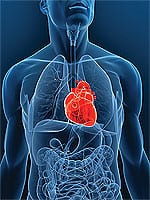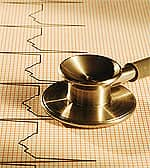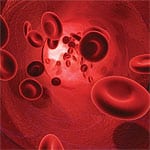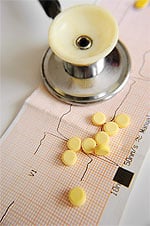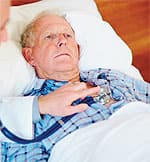Life Extension Magazine®
Are statin drugs right for you?At Life Extension®, we have long maintained that one’s decision to take a particular drug should be based on individual blood test findings. For blood lipids, we recommend members seek to achieve the following optimal ranges:
Statin drugs lower LDL and total cholesterol, but have only a modest effect on boosting artery-cleansing HDL. Statin drugs do not lower triglycerides. Physicians often rely solely on high-dose statin drug therapy to achieve desired blood lipid readings. One problem with this approach is that side effects elevate markedly as the dose of the statin drug is increased. While you should take all necessary steps to protect heart health—which may include cholesterol-lowering medications—high-dose statins are often unnecessary. They should not be considered the only approach, given their considerable risks at high doses. The side effects of sustained statin use are well documented—muscle wasting, cognitive impairment, blurred vision, and nerve damage, among others.
The encouraging news is that safe, low-cost, broad-spectrum interventions exist right now, especially for individuals with elevated cholesterol, LDL, and triglyceride levels (and low HDL) who do not have other risk factors for vascular disease. In this article, we explore a novel set of natural lipid-lowering compounds shown to support healthy cholesterol levels. Monacolin-K, a compound found in standardized red yeast rice extract, is a naturally occurring statin. It may surprise you to learn that in clinical studies, red yeast rice along with healthy lifestyle practices lowers cholesterol as effectively as the prescription drug simvastatin.1 A substantial body of supportive research further indicates that monacolin-K also reduces triglycerides and boosts HDL, thus offering a safer and broader spectrum alternative to taking synthetic prescription statins.2-8 You will also discover the clinically demonstrated heart-protective benefits of other natural compounds that can bring your blood lipids into healthy balance, lower C-reactive protein (CRP) in the blood, quell chronic system-wide inflammation, and support healthy endothelial function. Together they provide a potent, complementary alternative to prescription statin drugs. Why So Many Doctors Advocate Statin UseThe simple answer is: many of them have been misled by Big Pharma. It’s no exaggeration to say that statins have become the new aspirin in mainstream medicine’s war on cardiovascular disease. They’re considered wonder drugs by many in the medical community. As one leading cardiologist observed, “You can’t go to a cardiology conference and ask who’s on statins without everyone’s hand going up.”9
This almost casual attitude toward statin drug use largely stems from industry influence. Not content with letting doctors decide whether or not to prescribe statins on the merits of questionably favorable research data, some drug companies have apparently taken to bribing physcians to push statins on their patients. A 2009 investigative report disclosed that Pfizer and AstraZeneca, pharmaceutical giants that make the two best-selling statins—Lipitor® and Crestor®, respectively—offered Canadian doctors $100 for every new patient they put on the cholesterol-lowering drugs.10 This outrageous marketing ploy is nothing new. In 2003, when AstraZeneca was poised to launch Crestor®, which was already known to have twice the adverse side effects of other statins, another unethical deceit was discovered. Dr. Bryan Brewer, a highly influential cholesterol researcher, raved about the drug, telling attendants at a seminar at an American Health Association convention that the drug was safe and effective. His comments were conveniently published in a “special supplement” of the American Journal of Cardiology, timed perfectly with the release of Crestor® to the US market.11 An investigation later revealed that Dr. Brewer had financial ties to AstraZeneca as a paid speaker. It also revealed that AstraZeneca directly financed Dr. Brewer’s American Health Association seminar and Circulation’s special supplement. Dr. Brewer’s monetary ties to the drug maker were not disclosed in his article. Red Yeast Rice: A Better Alternative to StatinsRed yeast rice (RYR), a staple of Chinese medicine and a traditional Asian seasoning, is made by fermenting polished rice with various strains of the yeast monacus purpureus. It contains a naturally occurring statin called monacolin-K. High-dose statins are often unnecessary, and may not be the right choice for millions of people, given their side effect profile.
Monacolin-K effectively lowers cholesterol by acting as an HMG-CoA reductase inhibitor—the same mode of action as synthetic statin drugs. Bioactive compounds found in RYR complement monacolin-K’s lipid-lowering effects, including unsaturated fats.12 These act both as cholesterol-lowering and anti-inflammatory agents.13
Mainstream medicine has been slow to embrace red yeast rice (RYR) as an alternative treatment therapy because the FDA does not regulate the supplement—and because many doctors remain unaware of its lipid-lowering ability and safety profile. This constitutes a great disservice to the millions of Americans now taking synthetic statin drugs. There is a wealth of compelling evidence indicating RYR’s power to lower low-density lipoprotein (LDL) and triglyceride levels and raise high-density lipoprotein (HDL)—without unwanted and sometimes dangerous side effects. In one of the largest studies of its kind, a meta-analysis of 93 randomized controlled trials involving almost 10,000 Chinese patients found that RYR could significantly lower levels of total cholesterol, LDL, and triglycerides, and raise levels of HDL compared with placebo.14 In a study specifically designed to determine if RYR could lower lipid levels without causing myalgias (muscle pain), researchers conducted a randomized, double-blind, placebo-controlled trial in patients with high cholesterol.15 Study participants were randomly assigned to take either 1,800 mg of red yeast rice or placebo twice daily for 24 weeks. All participants were also enrolled in a 12-week therapeutic lifestyle change program during the study.
LDL levels decreased more in the RYR treatment group (average decrease of 35 mg/dL) than in participants receiving the placebo (average placebo decrease was 15 mg/dL). The RYR treatment achieved these results without increasing muscle pain or CPK (creatine phosphokinase)—an enzyme in the blood that indicates muscle damage. RYR has been shown in some studies to perform as well or better than some widely used synthetic statins. In one randomized, open-label clinical trial, investigators looked at 74 individuals with high cholesterol, dividing them between a simvastatin treatment group (40 mg/day) and an alternative treatment (AT) group.1
The alternative treatment included lifestyle changes and ingestion of RYR and fish oil supplements for 12 weeks; the statin group received their medication and traditional counseling. Both groups achieved a statistically significant reduction in LDL levels (AT group –42.4% and the simvastatin group –39.6%). But the AT group also achieved significant reductions in triglycerides (–29% in the AT group vs. –9.3% in the statin group) and weight loss (–5.5% vs. –0.4% of body weight in the statin group). The data showed that lifestyle changes (i.e., diet, exercise, relaxation techniques) combined with ingestion of RYR and fish oil reduced LDL in proportions similar to standard therapy with simvastatin. Investigators concluded that, “This multifactorial, alternative approach to lipid lowering has promise for a subset of patients unwilling or unable to take statins.” Individuals already suffering from coronary heart disease (CHD) may also benefit from RYR as it has been shown to blunt the increase in triglycerides following a meal in patients with clinically documented coronary heart disease (CHD).16 After a high-fat meal, RYR significantly reduced fasting serum lipids while increasing fasting HDL. Post-meal triglyceride levels fell by 43% after 6 hours in the treatment group—but not in the control group. Pantethine: A Lipid-Lowering VitaminPantethine is the active form of vitamin B5 (or pantothenic acid), the molecule used to make coenzyme A (CoA). CoA is involved in the transport, synthesis, and oxidation of fatty acids to and from the cells, and into the mitochondria. As a member of the B-complex family of vitamins, pantothenic acid is essential to numerous bodily functions, including synthesis of neurotransmitters, hormones, and hemoglobin. Studies have shown that pantethine can reduce serum triglycerides and cholesterol levels while increasing HDL levels. This is true across a broad range of at-risk populations. Cardiovascular diseases are the main cause of death in women, especially post-menopause. In a 16-week study of 24 menopausal women with high cholesterol (total cholesterol greater than or equal to 240 mg/dL), pantethine yielded significant reductions of total cholesterol, LDL, and LDL/HDL ratio.17 Another study of pantethine in 7 children and 65 adults with high cholesterol and/or high triglycerides showed a significant reduction in total cholesterol, LDL, and triglycerides—as well as a substantial increase in HDL.18
In another illustrative clinical trial, researchers examined the effect of oral treatment with pantethine on 20 patients with elevated cholesterol and triglycerides.19 They found significant decreases of total cholesterol, LDL, and triglycerides, with increased levels of HDL. | ||||||||||||||||
Beta-Sitosterol: An Anti-Inflammatory and Anti-Cholesterol Plant ExtractBeta-sitosterol is a primary plant sterol. This class of compounds is molecularly similar to cholesterol and may inhibit cholesterol’s absorption in the lower intestine and reduce levels of cholesterol in the blood. Phytosterols have also been shown to act in synergy with red yeast rice by achieving a therapeutic effect at a lower dose. In effect, beta-sitosterol acts as a potent dietary cholesterol blocker. A significant body of clinical evidence has demonstrated its cholesterol-lowering effects. In a 2005 study, researchers gave 29 individuals with high cholesterol (40-80 years old, average age = 55; 14 with type 2 diabetes) an edible beta-sitosterol spread.20 Both diabetic and non-diabetic patients experienced a greater reduction in LDL—27% and 15% respectively—than controls. A meta-analysis of 14 randomized controlled trials investigated the effects of plant sterols added to margarine on cholesterol levels.21 The sterol-fortified margarine caused a reduction in the mean concentration of LDL, an effect that tended to increase with age. The results of two older beta-sitosterol studies further indicate it can decrease systemic inflammation. In one meta-analysis, the lead investigator noted that beta-sitosterol appears to support proliferation of peripheral blood lymphocytes and enhance the cytotoxic effect of natural killer cells.22 Another study that measured inflammation and immune suppression in marathon runners found that beta-sitosterol could help prevent immune system suppression and could reduce bodily inflammation.23 Together, these anti-inflammatory properties led researchers to suggest that beta-sitosterol might be of clinical use in treating a number of chronic inflammatory conditions that could lead to cancers of the breast and colon. PolicosanolPolicosanol is a naturally occurring component of beeswax and whole sugar cane. More than 80 studies performed mostly by a single research institute suggest that policosanol obtained from Cuban sugar cane at doses of 5-40 mg/dL exerts cholesterol-lowering effects equivalent to that of statin drugs.24,25 (It should be noted that other research groups using policosanol from alternative sources have failed to reproduce the efficacy of these alcohols observed in earlier studies.)26 Numerous animal models studies have been conducted using policosanol. One study found that pretreatment with policosanol and omega-3 fatty acids prevented arterial wall thickening and endothelial damage in animals whose arteries had been damaged artificially.27 Some research suggests that policosanol is effective in lowering cholesterol in patients with progressive atherosclerosis and diabetes. One study tested policosanol in patients suffering ischemic stroke who were also treated with aspirin and vitamins. They achieved substantially positive results, with improvements in neurological outcomes and recurrent events.28 NiacinNiacin’s ability to lower LDL, raise HDL, and lower triglyceride levels has been conclusively established by a wealth of clinical research.29 It is one of the best-known and most widely used vitamins for lowering blood cholesterol levels. It has also been shown in multiple studies to provide better heart health protection than some statins. A widely publicized study appearing last November in the New England Journal of Medicine found that niacin was more effective at shrinking artery plaque than a billion-dollar blockbuster called ezetimibe, the active ingredient in the cholesterol drugs Zetia® and Vytorin®.30
Recent studies further indicate that niacin reduces oxidative stress and inhibits vascular inflammatory genes, including key cytokines involved in atherosclerosis.29,31,32 Until recently, niacin’s general use and widespread patient tolerability have been impeded by the need to take it 4 times a day and by the high incidence of skin flushing, gastric problems, and other adverse events.
A form of “no-flush” niacin has emerged, called inositol hexaniacinate (IHN).33 It consists of six molecules of nicotinic acid (niacin) and one molecule of inositol. It is metabolized in the body into its component parts, niacin and inositol, and does not reach maximum blood levels for approximately 10 hours after ingestion. This form of the vitamin has not been linked with the skin “flushing” or other typical niacin reactions, even when ingested in amounts typically associated with skin flushing, nausea, vomiting, and agitation. Regrettably, it also does not work as well as niacin in reducing LDL and triglycerides and boosting HDL. SummaryStatin drugs are heavily used and over-prescribed, owing to industry influence and misinformation. High-dose statins are often unnecessary, and may not be the right choice for millions of people, given their side effect profile. Studies indicate that any reduced cardiovascular risk from taking statins may be offset by other serious side effects, from sexual, visual, hepatic, renal, and cognitive dysfunction to disability and death. Aging individuals who want to lower their blood lipid levels and C-reactive protein (CRP) number may be able to achieve similar benefits with standardized red yeast rice extract, beta-sitosterol, pantethine, policosanol, and niacin. These synergistic ingredients have been shown to reduce blood lipid levels while promoting healthy endothelial function and reducing CRP and systemic inflammation. They offer a safer alternative to taking synthetic prescription statins. If you have any questions on the scientific content of this article, please call a Life Extension® Wellness Specialist at 1-866-864-3027.
| ||||||
| References | ||||||
|


